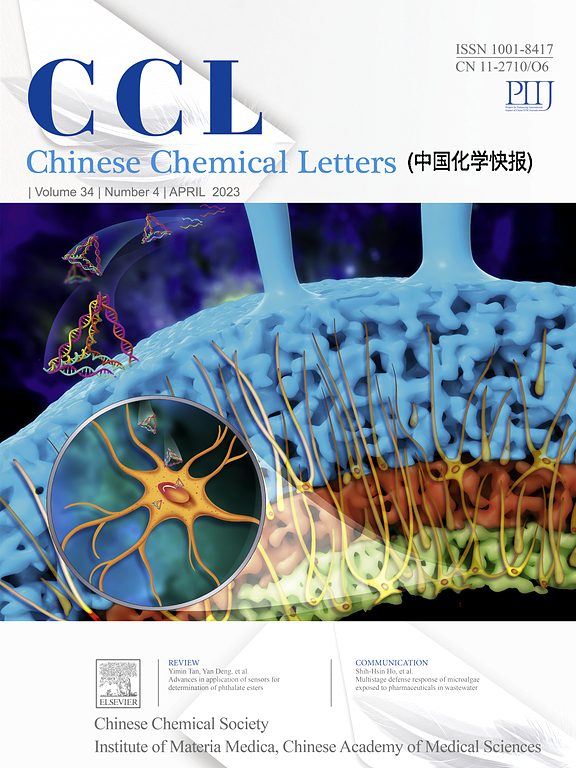通过抗坏血酸诱导强金属-载体相互作用构建抗烧结金催化剂
IF 9.4
1区 化学
Q1 CHEMISTRY, MULTIDISCIPLINARY
引用次数: 0
摘要
在恶劣条件下保持负载型金属催化剂的高分散性以获得优异的反应活性是其实际应用面临的主要挑战之一。通过多种方法构建和调节强金属-载体相互作用(SMSI)已成为制造鲁棒负载型金属催化剂的有前途的方法之一。在这项研究中,我们报道了一种l-抗坏血酸(AA)诱导策略,在惰性气氛(600 °C, N2)中高温处理后,在钛负载金(Au)催化剂上生成SMSI。aa诱导的SMSI可以有效地稳定金纳米粒子并保持其催化性能。详细的研究表明,实现这种SMSI的关键是由吸附的AA诱导TiO2载体内产生氧空位,从而驱动Au NPs上形成TiOx可渗透层。该策略可以扩展到具有不同晶相和铂族金属(如Pt, Pd和Rh)的tio2负载Au催化剂。本研究为利用简单还原性有机吸附剂构建SMSI来设计稳定高效的负载贵金属催化剂提供了一条有前景的新途径。本文章由计算机程序翻译,如有差异,请以英文原文为准。

Construction of sintering-resistant gold catalysts via ascorbic-acid inducing strong metal-support interactions
Maintaining high metal dispersion of supported metal catalysts to achieve superior reactivity under harsh conditions poses one of the main challenges for their practical applications. Constructing and regulating the strong metal-support interactions (SMSI) by diverse methodologies has emerged as one of the promising approaches to fabricating robust supported metal catalysts. In this study, we report an l-ascorbic acid (AA)-inducing strategy to generate SMSI on a titania-supported gold (Au) catalyst after high-temperature treatment in an inert atmosphere (600 °C, N2). The AA-induced SMSI can efficiently stabilize Au nanoparticles (NPs) and preserve their catalytic performance. The detailed study reveals that the key to realizing this SMSI is the generation of oxygen vacancies within the TiO2 support induced by the adsorbed AA, which drives the formation of the TiOx permeable layer onto the Au NPs. The strategy could be extended to TiO2-supported Au catalysts with different crystal phases and platinum group metals, such as Pt, Pd, and Rh. This work offers a promising novel route to design stable and efficient supported noble metal catalysts by constructing SMSI using simple reducing organic adsorbent.
求助全文
通过发布文献求助,成功后即可免费获取论文全文。
去求助
来源期刊

Chinese Chemical Letters
化学-化学综合
CiteScore
14.10
自引率
15.40%
发文量
8969
审稿时长
1.6 months
期刊介绍:
Chinese Chemical Letters (CCL) (ISSN 1001-8417) was founded in July 1990. The journal publishes preliminary accounts in the whole field of chemistry, including inorganic chemistry, organic chemistry, analytical chemistry, physical chemistry, polymer chemistry, applied chemistry, etc.Chinese Chemical Letters does not accept articles previously published or scheduled to be published. To verify originality, your article may be checked by the originality detection service CrossCheck.
 求助内容:
求助内容: 应助结果提醒方式:
应助结果提醒方式:


